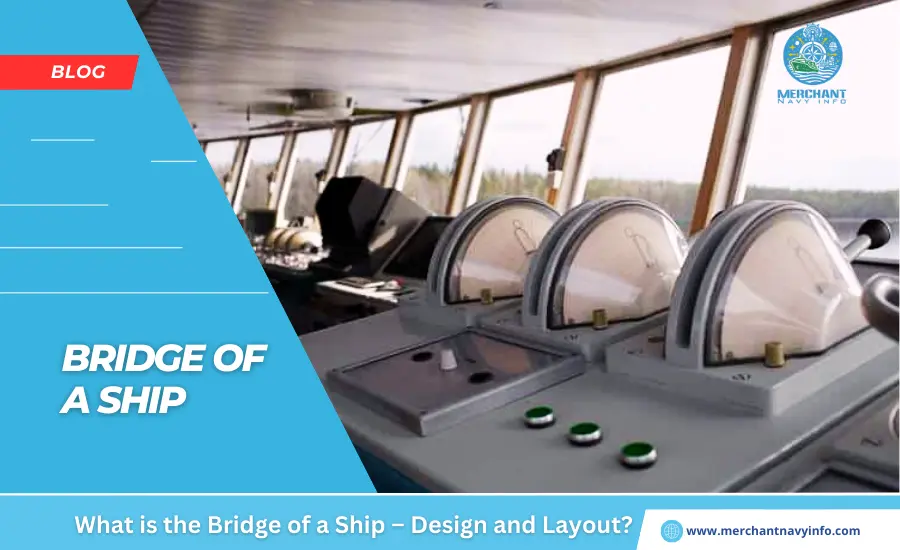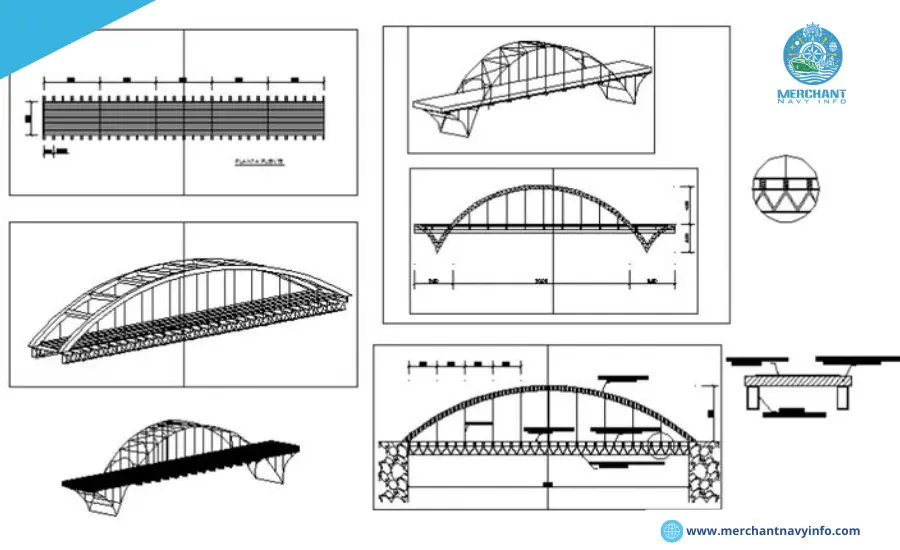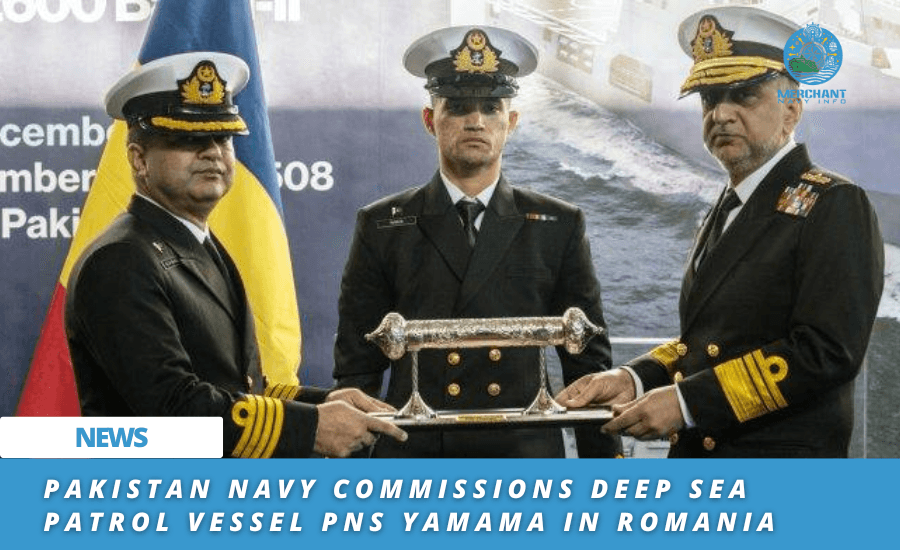
A huge ship is several hundred meters long and weighs several thousand tons. The ability to control and modern ship bridge layout such a large ship is paramount.
How Can A Small Crew Operate Such a Huge Ship?
This is where a modern ship bridge layout comes into play. The bridge is the ship’s main control center, where the captain and officers can control the ship’s entire operation. They are usually installed in locations with unobstructed views and ready access to critical areas of the ship. Historically, a bridge was a structure connected to a paddle house that housed the steering equipment. It was given this name because it closely resembles a real bridge. Even after paddle wheels became obsolete and were replaced by modern ship bridge layouts, the term “bridge” persisted. The bridge captain is the captain who is in charge of and responsible for the ship at all times while on board.
Modern Ship Bridge Layout and Design

A modern ship bridge layout is intended to be the ship’s focal point and must provide a clear and unobstructed view of the surrounding area. Although the bridge has various electronic and navigation equipment, it must serve its main purpose. Therefore, the bridge is divided into two main areas. One front area is for clear observation, and one is for control and communication. The front of the observation area is surrounded by a large glass pane designed to withstand adverse weather conditions such as storms and hail.
Plexiglass Structures
Plexiglass structures are often used and supported by steel or aluminum frames. Roller blinds that can be lowered are also used to ensure visibility is not impaired, even in bright areas. In addition to the central observation deck, there is also a bridge wing.
These wings are structures that project laterally from the bridge. They are installed on the port and starboard sides, and their main purpose is to increase visibility, especially during complex maneuvers such as port berthing. Each side also houses separate bow and stern thruster controls. Thrusters are propellers located deep within the fuselage that give the Captain a high degree of control for precise turns and adjustments.
The bridge wings can be opened and closed depending on the type of ship. In most cases, the wings are left open to maximize visibility. Additionally, the wings have communications equipment that can relay information to the main bridge section. Access to the bridge wings is restricted to trained sailors and officers on duty. The remaining areas of the bridge house major navigation, control, and communications equipment.
In addition, several control devices can remotely control various parts of the ship. Several internal telephone lines connect the bridge directly to the chief engineer, master, first officer, and engine room. This allows immediate action based on observer input.
Bridge Controls and Engines
Rudder, engine, and thruster controls are available at one of the many consoles on the bridge to control your ship. The chief engineer or engine room officer gives the engines primary control, but the bridge officer often issues commands to the engine room.
Engines are often controlled from the bridge wings for increased visibility. Unlike the engine, steering is the main function of the powerplant compared to power. Control is primarily via the rudder and thrusters, both controlled by the bridge. The rudder must be able to rotate 45° to port and starboard without hitting the engine.
For azipods or integrated propulsion systems, larger command centers are often used due to the greater sensitivity of the equipment. The Azipod is an interesting technological invention that allows a conventional engine to be integrated into the rudder.
Therefore, a set of azipods can achieve nearly 100 degrees of efficiency by rotating in almost all directions. This eliminates the need for different controls on the drive and steering systems. Generally, the controls on the port side are often marked in red and the starboard side in green. This makes it easier for the navigator and crew to control.
Ship Propellers – How Do They Work?
Dredgers Ships: Types & Their Uses in Offshore Operations
Navigation and Communication on the Bridge
Navigation is a vital ship component and is the only way to move a ship safely from port to port. Basic navigation equipment includes the Global Positioning System “GPS,” Navtex receivers, Electronic Map Display and Information System “ECDIS,” radar systems, and communication channels. Navigation is often controlled using a map, which is used to plot the route.
A combination of GPS and compass systems ensures the ship stays on course. Maps and equipment are kept separately to ensure the bridge is subdivided. Binoculars are also used for daytime observation. However, when the weather is not clear, visibility is poor, or at night, radar must be used to locate and navigate the vessel accurately.
Bridge Guidelines and Requirements
A vessel must follow the most stringent protocols at sea to comply with her SOLAS and IMO regulations. Since the bridge controls the entire ship, it is important that the bridge and all equipment comply with regulations. For navigation purposes, the bridge must be installed in such a position that clear visibility is guaranteed both the forward and stern of the ship.
Also, the visibility for the officer on duty (OOW) must be at least 255 ⁰, with visibility of at least 112.5 ⁰ on both the port and starboard sides. For bridge wings, the ship’s sides must be visible at 180 ⁰ and the opposite side at 45 ⁰. For tax officers, the minimum visibility is 60⁰ on both sides.
Bridges on Warships
Warships often have multiple bridges that serve multiple purposes. For example, the navigation bridge houses all navigation-related devices and maps. This is where the actual route planning is completed and transferred to the Captain’s Bridge, which houses radar equipment for maritime and military purposes. There is also a Captain’s Bridge, where the Captain controls the ship’s and warship’s vital components.
If a warship is the center or flagship of a fleet, there is usually a separate admiral bridge used for strategic and command purposes. Here, ship control is different from ship control. This bridge is usually inhabited by military personnel who manage the fleet.
Bridge Simulator System
Bridges house highly sensitive equipment. Successfully navigating the waters requires extensive training on the bridge. On average, police officers spend years honing their skills before taking control of a bridge.
Additionally, control of nearly every part of the ship is from the bridge, so only trained and authorized personnel are allowed access. For training purposes, recruits cannot be given command of the entire ship. This is where a bridge simulator comes into play. These are similar to aircraft cockpit simulators but much larger.









